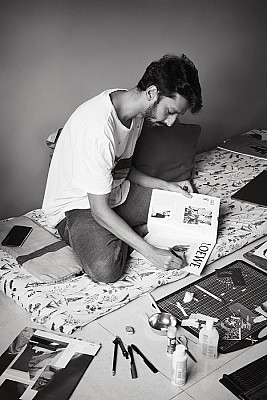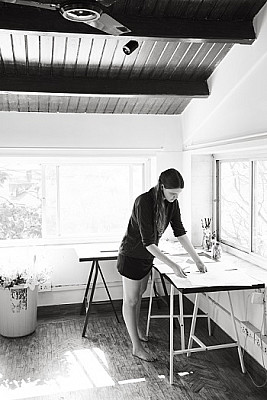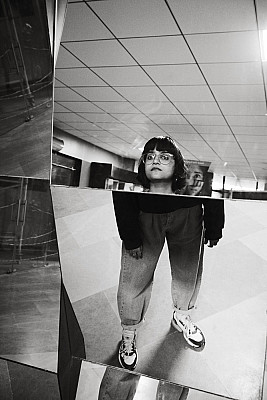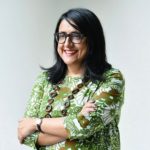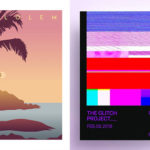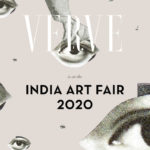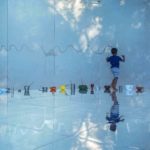Meet The Artists Collaborating With Verve At The India Art Fair 2020 #VervexIAF2020
Starting today, the Verve Design Gallery at the India Art Fair will be exhibiting exclusive fashion and lifestyle products featuring one-of-a-kind artworks by three up-and-coming artists Vartika Sharma, Rohan Hande and Clement Stanback. Through their artwork, the artists have visually interpreted the word ‘Ambition’, which is the theme of our current issue.
Sharma is a visual artist based in New Delhi working in the medium of collage and photography and employing similar sensibilities in her design practice, making a unique blend of art and design. Hande is a photographer & visual artist, an Arts University Bournemouth graduate in BA (Hons) Commercial Photography. Stanback is originally from North Carolina and received her BFA in painting from Washington University in St. Louis in 2018. She has been in Mumbai since December 2018 and has been making her work out of ikattha space, an artist run studio space in Colaba.
Below, they discuss being creatives in the age of Instagram, burnout, setting boundaries and exhibiting at the India Art Fair.
As young, freelance artists, how do you see the role of social media, particularly Instagram in forming a community with fellow creatives?
Vartika Sharma (VS): Two recent projects that are very special to me, and fun to work on, came through Instagram. I have met some really inspiring and supportive people there.
Rohan Hande (RH): Social media has been a wonderful platform not only to showcase my work, but also to discover new methods of execution. That said, I think it’s important to regulate our consumption and be aware of the consequences, because it does have drawbacks. There are times when it can bring along a stream of anxiety and insecurity.
Clement Stanback (CS): I have a difficult relationship with social media, and it is one that often feels forced. However, I have made a big push recently to use it more actively for the sake of getting my work out there. While it can be a hassle, it is definitely worth the effort. Not only have I been able to see a lot of other artists’ work I wouldn’t have otherwise, but in some cases, I’ve also been able to meet them and gain new opportunities from it.
Do you find that it’s hard for you to focus on your creativity in the midst of the current political turmoil? Does it drain you, or does it energize you to be creative?
CS: The political climate has no doubt shaped my perspective, which in turn frames my work. I have found myself replacing the landscape and environment in my work with bizarre, amorphous lines that I find mirror my feelings toward the world today.
RH: I have always found that when faced with uncertainties, I am forced to think differently and work harder. Maybe this comes from our natural ability to adapt and survive. I also think the current political climate has brought people closer than I have ever seen before. It can be draining, but as Indian citizens we can fight for our rights.
Do you ever experience burnout? Do you have any rituals or methods that you use to deal with burnout?
RH: All the time! I experience post-work fatigue on a daily basis. I don’t really have any rituals, but I’ve found that cleaning up my apartment or going for a walk with some good music generally helps.
VS: When it feels like things are not working out, or if I feel stuck, I just take a day off and watch movies. It’s the best way to disconnect and reset your mind.
CS: I try to keep my work as a freelancer in balance with my own practice so one does not overshadow the other, and I can switch pretty fluidly between the two. Sometimes I may experience burnout with one project, but I am lucky enough to work for myself—and across different mediums—so I usually have a couple projects going on at once.
As freelancers, is it difficult to set boundaries between your personal and professional life?
VS: Yes, it is difficult to set boundaries, but I try to follow a routine, have fixed working hours and have meals on my time, and not according to the deadlines.
RH: As a collage artist I work by myself, but I collaborate when I’m photographing. Personally, I don’t think it’s a big deal if my professional and personal lives overlap. In fact, I think it would be odd if I remained totally detached from people simply because I met them through work. I see it as an opportunity to get inspired and make friends.
CS: I currently work in a collective studio space for artists which makes it relatively easy to juggle my personal and professional life. It is a very social environment, and I get to constantly collaborate with my friends who are musicians, writers, illustrators, designers and other fine artists. In this way, personal and professional get entangled, and I find that works better for me. I enjoy not having to separate my work from my social life.
What do you need to have in place to work?
VS: I prefer working in daylight, and I like to listen to just one song on repeat.
RH: I need a wide airy space with plenty of natural light.
CS: I much prefer a shared studio space because I have a hard time working in isolation. The work of an artist can be very intense and isolating as it is, and working alone can bring me into my head too much. I find it helpful (and healthier) to have a space every day to go to and people to look forward to seeing.
What does 2020 have in store for you? What is one way you’re looking to challenge yourself as artists?
CS: I recently had a show of all the work I have done over the last year living in Mumbai. It was really gratifying to be able to look at the year as a whole, and to have documentation of my thoughts, experiences, and growth over this time. I hope to keep working as hard and build another body of work to show documenting 2020.
VS: I really hope to complete a book that I’ve been working on for the past 2 years.
RH: I tend to put a lot of pressure on myself, so last year’s goal was to be kind to myself, and I feel like I was successful. This year is all about self-improvement and being better than yesterday. There’s no way for me to measure this, but I think of it this way – as long as I take one step forward every day, that is a step closer to my goal.
How do you define success?
CS: I think my definition of success in regards to my work is meeting a self-imposed standard. I have very strong opinions about my work and would say I don’t meet this standard often, but when I do it motivates me to keep creating and pushing myself further.
VS: Being comfortable in your own skin, not trying to prove anything. I don’t think success has anything to do with perfection, it is more about acceptance and being content.
RH: If you had asked me this in college, I would have had a pretty straightforward answer: keep working until your name is in big letters. But now I find myself asking more and more what comes after. Where do you go from there? Of course, the ambition still exists. My goals are constantly changing and I change with them. But I have come to define success more in terms of an understanding, close group of friends and a supportive family, because I know that’s what will tide me over in hard times.
Which artist’s work are you personally most looking forward to seeing at IAF 2020?
RH: Unfortunately I won’t be able to make it to the event, but I would’ve loved to attend workshops by Manisha Parekh, Ghiora Aharoni, Bombay Underground, and IAF Parallel shows featuring Sorabh Hura, and Zarina Hashmi.
CS: I am very excited to see the work of Idris Khan at the India Art Fair. I had the chance to see it recently at Galerie Isa in Mumbai but would love another look.
VS: Manisha Parekh
Instagram has democratised the art world in a way and made it easier for young artists without the right contacts to become known. How important or relevant then is a platform like India Art Fair then for young artists to attain visibility?
CS: Although Instagram has democratised the art world in many ways, I believe that galleries and platforms like the India Art Fair are still extremely important. Not only for eyes outside of the algorithm, but also for the physicality that a fair offers. I do not believe art should always be viewed on a screen and I think we should regard the existence of a painting as its physical form, not its virtual representation.
VS: An art fair gives access to audiences and artists that may not have necessarily discovered each other on social media, it is a way to experience art beyond the limits of the screen.
RH: To be a part of something as large and versatile as IAF is a huge step forward. Not only in terms of my career graph, but also putting my work out there, in a space where people are physically present, is a huge boost of confidence. I’m very grateful to Verve for considering me to be a part of it and creating a platform for upcoming artists to showcase their work.
The Verve Design Gallery will be at Booth 7 at India Art Fair, New Delhi from January 30 – February 2.
Related posts from Verve:
Verve Trending
Sorry. No data so far.
us on Facebook to stay updated with the latest trends

